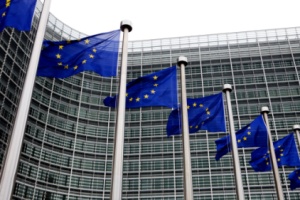 One of EU-OSHA’s biggest achievements of the year was the development and approval of its multi-annual strategic programme for 2014 to 2020. The work programme, based on six priority areas, will focus the agency’s activities to help it make the best possible use of its resources. Demographic change in Europe, particularly the ageing population and a higher proportion of women in work, has been a key influence on the priority areas. The work programme will make a significant contribution to the objectives of the Europe 2020 strategy for a smart, sustainable and inclusive European economy.In its 2013 annual report, the European Agency for Safety and Health at Work (EU-OSHA) demonstrates that it has continued to successfully promote the economic benefits of investing in workplace safety and health by stressing the importance of working together.
One of EU-OSHA’s biggest achievements of the year was the development and approval of its multi-annual strategic programme for 2014 to 2020. The work programme, based on six priority areas, will focus the agency’s activities to help it make the best possible use of its resources. Demographic change in Europe, particularly the ageing population and a higher proportion of women in work, has been a key influence on the priority areas. The work programme will make a significant contribution to the objectives of the Europe 2020 strategy for a smart, sustainable and inclusive European economy.In its 2013 annual report, the European Agency for Safety and Health at Work (EU-OSHA) demonstrates that it has continued to successfully promote the economic benefits of investing in workplace safety and health by stressing the importance of working together.
EU-OSHA’s director, Dr Christa Sedlatschek, argues that partnership and collaboration were central to the agency’s successful year. “The past year has seen some significant achievements for the agency, including the conclusion of our most successful Healthy Workplaces Campaign to date,”says Dr Sedlatschek. “The key to the success of this campaign was to be found in its slogan, highlighting the importance of working together. This theme has resonated throughout our work for the year as we networked in partnership with other organisations to reach out to the widest possible audience and encourage member states to work together to build capacity in occupational safety and health for newer members.”
In addition, the findings of the third European Opinion Poll on Occupational Safety and Health were launched: 16,500 workers in 31 countries were interviewed about work-related stress and occupational safety and health in older workers. The poll’s findings, reproduced in the infographics from the annual report, highlight the need for both the agency’s 2014–15 campaign on managing stress and the consolidation of its activities in the area of older workers.
Other activities of the year include the publication of the findings from EU-OSHA’s “green jobs” Foresight project, the completion of preparatory work for the second edition of the flagship European Survey of Enterprises on New and Emerging Risks (ESENER) and the publication of nine new risk assessment tools for the Online interactive Risk Assessment (OiRA) project, covering such occupations as hairdressing, catering and car repair. These activities, among others, are detailed in the Annual Report summary, available in 25 languages.
The annual report also looks forward to 2014, set to be an exciting year for EU-OSHA as it embarks on its strategic programme, promotes its new campaign and strengthens links with its networking partners.One of EU-OSHA’s biggest achievements of the year was the development and approval of its multi-annual strategic programme for 2014 to 2020. The work programme, based on six priority areas, will focus the agency’s activities to help it make the best possible use of its resources. Demographic change in Europe, particularly the ageing population and a higher proportion of women in work, has been a key influence on the priority areas. The work programme will make a significant contribution to the objectives of the Europe 2020 strategy for a smart, sustainable and inclusive European economy.In its 2013 annual report, the European Agency for Safety and Health at Work (EU-OSHA) demonstrates that it has continued to successfully promote the economic benefits of investing in workplace safety and health by stressing the importance of working together.
EU-OSHA’s director, Dr Christa Sedlatschek, argues that partnership and collaboration were central to the agency’s successful year. “The past year has seen some significant achievements for the agency, including the conclusion of our most successful Healthy Workplaces Campaign to date,”says Dr Sedlatschek. “The key to the success of this campaign was to be found in its slogan, highlighting the importance of working together. This theme has resonated throughout our work for the year as we networked in partnership with other organisations to reach out to the widest possible audience and encourage member states to work together to build capacity in occupational safety and health for newer members.”



